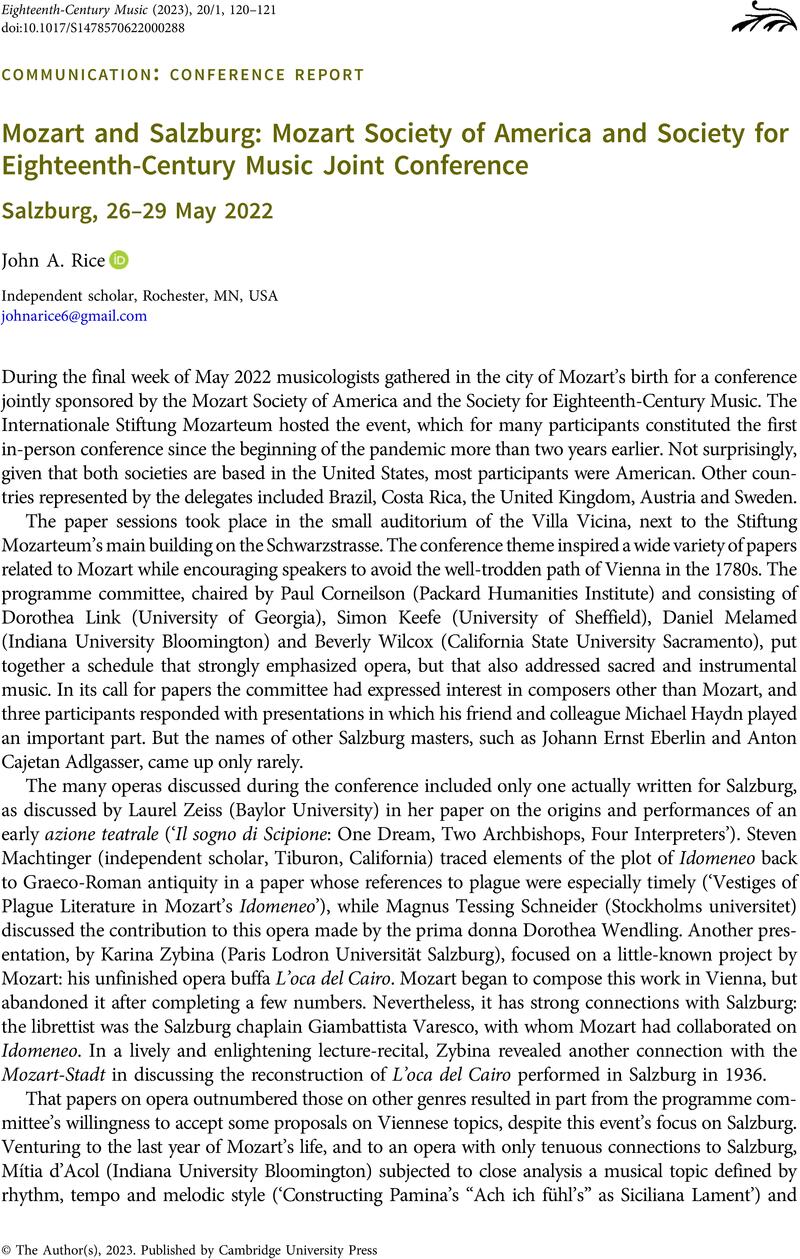No CrossRef data available.
Article contents
Mozart and Salzburg: Mozart Society of America and Society for Eighteenth-Century Music Joint Conference Salzburg, 26–29 May 2022
Published online by Cambridge University Press: 08 February 2023
Abstract
An abstract is not available for this content so a preview has been provided. Please use the Get access link above for information on how to access this content.

- Type
- Communication: Conference Report
- Information
- Copyright
- Copyright © The Author(s), 2023. Published by Cambridge University Press



